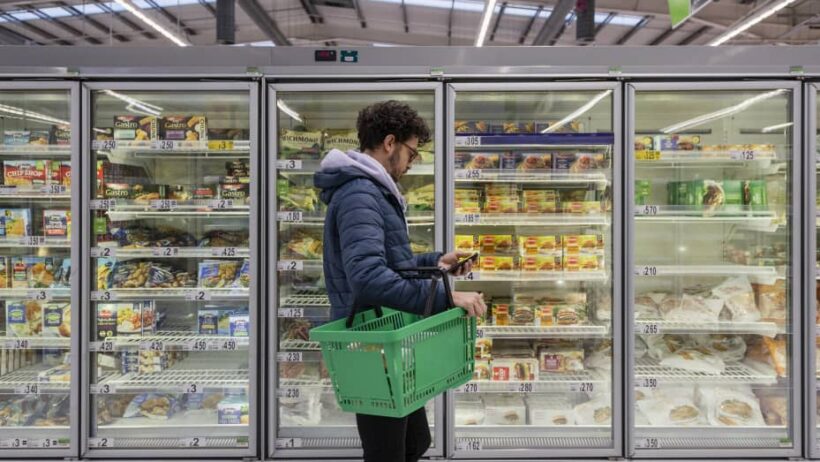
Solstock | E+ | Getty Images
U.K. inflation came in hotter than expected with a drop to 2.3% in April, the Office for National Statistics said Wednesday, prompting traders to pull back from bets on a June interest rate cut from the British central bank.
The headline reading declined from 3.2% in March. The April print marked the first time inflation has been below 3% since July 2021 and came within touching distance of the Bank of England’s 2% target.
Economists polled by Reuters had nevertheless expected a steeper drop to 2.1% in April.
Services inflation — a key measure being watched by the BOE because of the dominance of the sector in the U.K. economy and its impact on domestically-generated price rises — eased only slightly to 5.9% from 6%. That missed a forecast of 5.5% from both a Reuters poll and the British central bank.
Core inflation, excluding energy, food, alcohol and tobacco, dipped to 3.9% in April from 4.2% in March.
A dramatic drop in the headline rate was widely expected because of the year-on-year decline in energy prices. Investors were instead set to focus on core and services inflation, after BOE policymakers indicated they would be willing to cut interest rates some time in the summer, but stressed that the timing would depend on fresh data.
Following the print, money markets slashed the probability of a June rate cut to just 15%, down from 50% earlier in the day.
June cut ‘unlikely’
Both core and services were “disappointing,” said Suren Thiru, economics director of the Institute of Chartered Accountants in England and Wales.
“Lingering concerns over underlying inflationary pressures mean a June rate cut is unlikely. However, these figures may convince more rate setters to vote to ease policy, providing a signal that a summer rate cut is still possible,” Thiru said in a note.
That positions the European Central Bank as the next major central bank likely to start bringing down rates, as its policymakers continue to suggest it would take a major shock to prevent a June cut. Members of the U.S. Federal Reserve have meanwhile struck a significantly more hawkish tone in recent weeks, pushing back market expectations for a cut statesside until after September at the earliest.
Paul Dales, chief U.K. economist at Capital Economics, said the latest inflation data has made a June rate cut from the Bank of England unlikely, and “casts some doubt over August too.”
That is particularly due to the high services figure, Dales said in a note, which “suggests the persistence in domestic inflation is fading even slower than the BOE had assumed.”
U.K. Prime Minister Rishi Sunak said on social platform X that “inflation is back to where it should be.”
Sunak’s ruling Conservative Party has been hoping for signs of an improving economic environment, as it lags in the polls ahead of a national election that must take place before the end of January 2025. The U.K. economy exited a shallow recession in the first quarter of the year, recording 0.6% growth.
BOE Governor Andrew Bailey has stressed that the central bank will remain politically independent in deciding the timeline of the next rate cut, irrespective of the forthcoming election.

